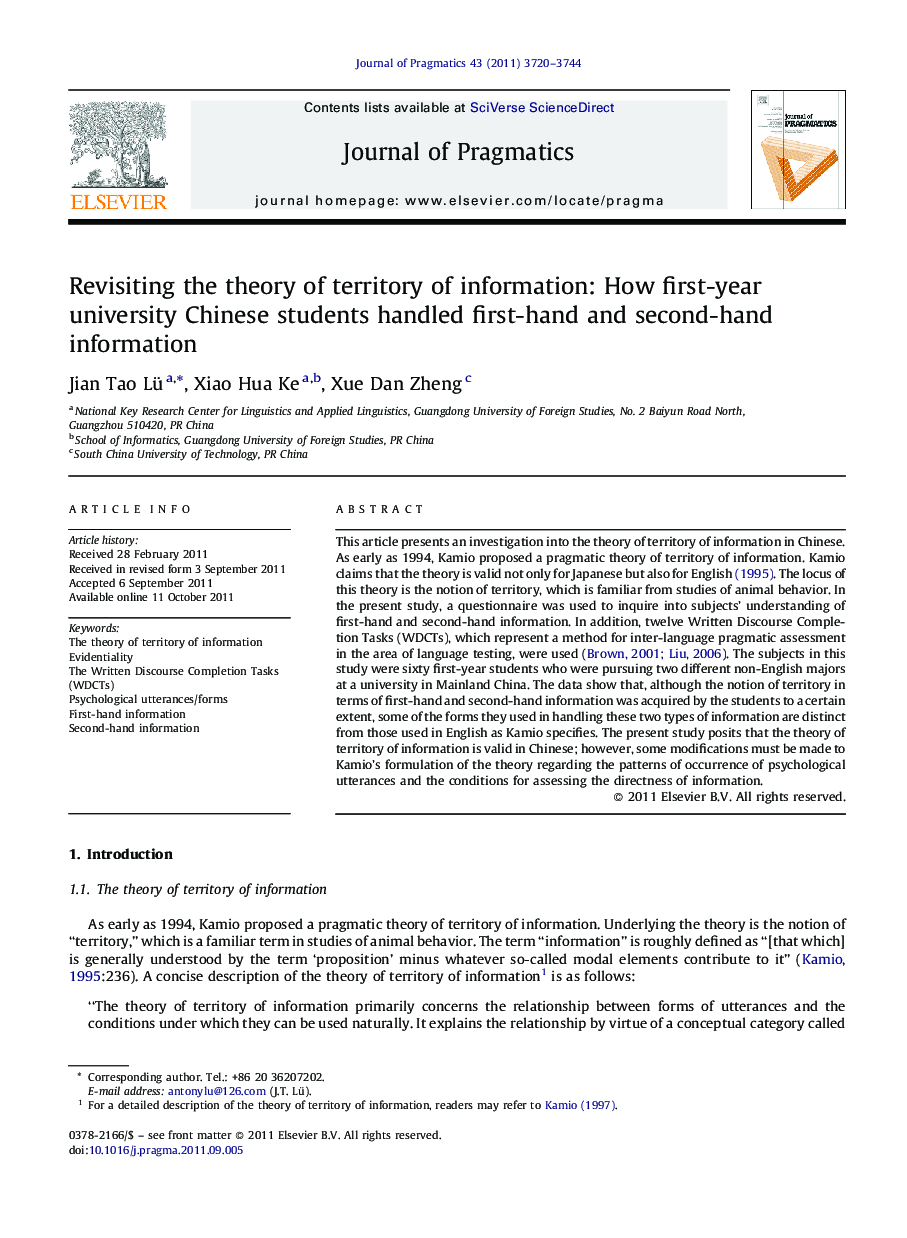| Article ID | Journal | Published Year | Pages | File Type |
|---|---|---|---|---|
| 932996 | Journal of Pragmatics | 2011 | 25 Pages |
This article presents an investigation into the theory of territory of information in Chinese. As early as 1994, Kamio proposed a pragmatic theory of territory of information. Kamio claims that the theory is valid not only for Japanese but also for English (1995). The locus of this theory is the notion of territory, which is familiar from studies of animal behavior. In the present study, a questionnaire was used to inquire into subjects’ understanding of first-hand and second-hand information. In addition, twelve Written Discourse Completion Tasks (WDCTs), which represent a method for inter-language pragmatic assessment in the area of language testing, were used (Brown, 2001 and Liu, 2006). The subjects in this study were sixty first-year students who were pursuing two different non-English majors at a university in Mainland China. The data show that, although the notion of territory in terms of first-hand and second-hand information was acquired by the students to a certain extent, some of the forms they used in handling these two types of information are distinct from those used in English as Kamio specifies. The present study posits that the theory of territory of information is valid in Chinese; however, some modifications must be made to Kamio's formulation of the theory regarding the patterns of occurrence of psychological utterances and the conditions for assessing the directness of information.
► This paper investigates the theory of territory of information in Chinese. ► The students acquired the notion of territory to a certain extent. ► Some of the forms the students used are distinct from those used in English. ► The study posits that the theory of territory of information is valid in Chinese. ► Some modifications must be made to Kamio's formulation of the theory.
